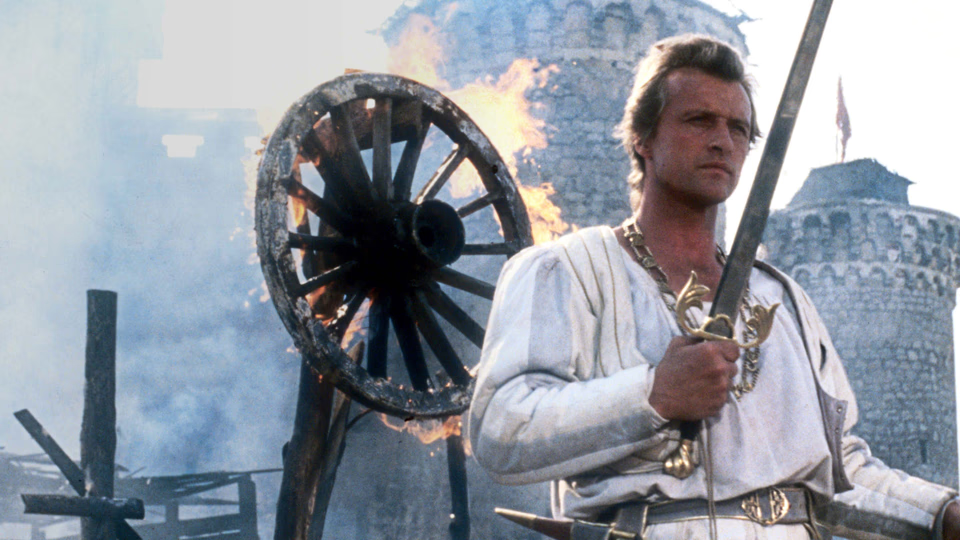Flesh+Blood

There’s a moment early in Paul Verhoeven’s Flesh+Blood when a mercenary captain, having just helped storm a castle, accidentally skewers a nun. The scene crystallizes everything Verhoeven wants to say about medieval Europe—it’s brutal, it’s absurd, and God’s representatives are just as likely to catch a sword in the gut as anyone else. If only the rest of the film maintained this savage clarity of purpose.
Verhoeven, making his English-language debut, clearly wants to strip away the pageantry we associate with medieval epics. His 16th-century Europe is a cesspool where life is cheap and an early death is a welcome relief. When Rutger Hauer and his band of mercenaries are betrayed by their nobleman employer (after doing his dirty work, naturally), you think you’re in for a mud-and-blood-soaked revenge tale. Instead, the movie gets tangled up in a tepid love triangle involving Jennifer Jason Leigh as a kidnapped noblewoman who falls for Hauer while her betrothed (Tom Burlinson) plots rescue.
Hauer, with his leonine presence and ability to suggest both brutality and charm, deserves better. So does Jack Thompson as the guilt-ridden captain who betrays his men. These two could have given us a medieval Wild Bunch, with Thompson’s crisis of conscience set against Hauer’s pragmatic amorality. But the studio requested changes, and thus, Leigh’s character was introduced and the focus turned to her sexual awakening amid the triangle with Hauer and Burlinson, a change Verhoeven would later regret.
Compounding matters, Leigh is at sea with the underwritten role. Her bleached eyebrows suggest a Scandinavian origin but her accent wanders all over Europe before disappearing completely.
The casting problems don’t end there. Burlinson, as the noble boyfriend, with his perpetually clean-shaven face appears to have wandered in from a Hallmark version of medieval times. And then there’s Bruno Kirby, whose pronounced accent announces him as European by way of Hell’s Kitchen.
The script’s third act introduction of the bubonic plague feels less like historical commentary and more like a desperate attempt to raise the stakes. This is a peculiarly cinematic version of the Black Death, one that kills with the selective precision of a Hollywood hitman—instantly lethal to some, mysteriously harmless to others who practically bathe in infected waters. It’s a cheap plot device that betrays the film’s earlier commitment to deglamorizing the period.
Yet for all its missteps, Flesh+Blood isn’t without its fascinations. The opening castle siege is a masterpiece of controlled chaos, and individual scenes crackle with the kind of perverse energy that would later fuel Verhoeven’s RoboCop and Starship Troopers. You can see him testing the waters of Hollywood excess while trying to maintain his European sensibilities about sex and violence.
What’s frustrating is how close the movie comes to being something special. In its best moments, it suggests a world without heroes, where survival meant compromise, and victory was just living long enough to regret your choices. But then it remembers it’s supposed to be a romantic melodrama, and the whole thing sinks into the medieval mud.
If nothing else, Flesh+Blood shows that Verhoeven understands America’s appetite for violence while maintaining a European’s skepticism about moral absolutes. It’s a shame the studio didn’t trust those instincts. Instead, we’re left with a film that’s part Wild Bunch, part bodice-ripper, and part plague drama—a combination that proves as awkward as it sounds.